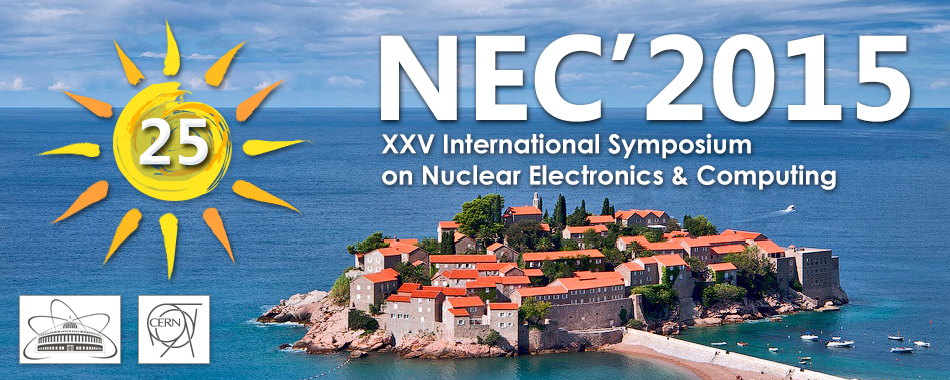Conveners
ATLAS DAQ
- DMITRY PESHEKHONOV (JINR)
ATLAS DAQ
- Lee Sawyer (Louisiana Tech University)
Lidija Zivkovic
(Institute of Physics Belgrade, Belgrade, Serbia)
30/09/2015, 09:00
In high-energy physics experiments, online selection is crucial to select interesting collisions from the large data volume. ATLAS b-jet triggers are designed to identify heavy-flavour content in real-time and provide the only option to efficiently record events with fully hadronic final states containing b-jets. In doing so, two different, but related, challenges are faced. The physics goal...
Lee Sawyer
(Louisiana Tech University, UK)
30/09/2015, 09:15
The new centre of mass energy and high luminosity conditions during Run 2 of the Large Hadron Collider impose ever more demanding constraints on the ATLAS online trigger reconstruction and selection system. To cope with these conditions, the hardware-based Level-1 trigger now includes a Topological Processor and the software-based High Level Trigger has been redesigned, merging the two...
Ryan White
(Universidad Técnica Federico Santa María, Valparaíso, Chile)
30/09/2015, 09:30
Electron and photon triggers covering transverse energies from 5 GeV
to several TeV are essential for signal selection in a wide variety
of ATLAS physics analyses to study Standard Model processes and to
search for new phenomena. Final states including leptons and photons
had, for example, an important role in the discovery and measurement
of the Higgs particle. Dedicated triggers are...
Dr
Yang Qin
(University of Manchester, UK)
30/09/2015, 10:05
The design and performance of the ATLAS Inner Detector (ID) trigger algorithms running online on the high level trigger (HLT) processor farm with the early LHC Run 2 data are discussed. During the 2013-15 LHC shutdown, the HLT farm was redesigned to run in a single HLT stage, rather than the two-stage (Level 2 and Event Filter) used in Run 1. This allowed a redesign of the HLT ID tracking...
Needa Asbah
(DESY, Hamburg, Germany)
30/09/2015, 10:20
The trigger system of the ATLAS experiment is designed to reduce the
event rate from the LHC nominal bunch crossing at 40 MHz to about 1
kHz, at the design luminosity of 10^34 cm^-2 s-1. After a successful
period of data taking from 2010 to early 2013, the LHC is restarting
in 2015 with much higher instantaneous luminosity and this will
increase the load on High Level Trigger system, the...
Mr
Tatsuya Mori
(The University of Tokyo)
30/09/2015, 10:35
The Large Hadron Collider (LHC) is foreseen to be upgraded during the shut-down period of 2018-2019 to deliver about 3 times the instantaneous design luminosity. Since the ATLAS trigger system, at that time, will not allow an increase of the trigger rate an improvement of the trigger system is required. The ATLAS LAr Calorimeter read-out will therefore be modified and digital trigger signals...

